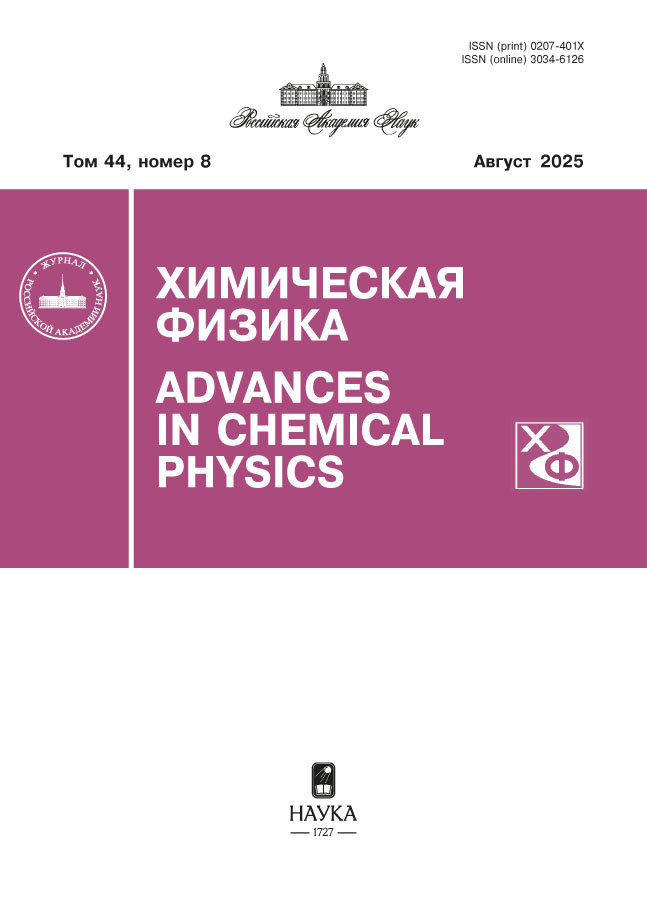The nature of exothermic reactions in highly dispersed initiating explosives
- 作者: Dimukhametov R.R.1, Sharova A.P.1, Knutov A.A.1, Ivanova D.S.1, Plakhov V.V.1
-
隶属关系:
- Kazan National Research Technological University
- 期: 卷 44, 编号 8 (2025)
- 页面: 26-32
- 栏目: Combustion, explosion and shock waves
- URL: https://transsyst.ru/0207-401X/article/view/688998
- DOI: https://doi.org/10.31857/S0207401X25080037
- ID: 688998
如何引用文章
详细
Highly dispersed initiating explosives and igniting compositions based on them in the form of an aqueous suspension and paste have been obtained, which can significantly improve the safety of the technological process of equipping pyrotechnic initiation devices. The properties of the obtained explosives are analyzed, and the scope of their application in the form of film pyroelements is proposed. A visual - thermal analysis of the exothermic transformation in film pyroelements under normal conditions has been performed. It has been shown that high-temperature exothermic reactions do not occur in the form of a detonation wave, but in the form of stationary layered combustion at the rate of 20 to 200 mm/s under normal conditions, with intense release of dispersed products and flames.
全文:
作者简介
R. Dimukhametov
Kazan National Research Technological University
编辑信件的主要联系方式.
Email: dim_rus2000@mail.ru
俄罗斯联邦, Kazan
A. Sharova
Kazan National Research Technological University
Email: dim_rus2000@mail.ru
俄罗斯联邦, Kazan
A. Knutov
Kazan National Research Technological University
Email: dim_rus2000@mail.ru
俄罗斯联邦, Kazan
D. Ivanova
Kazan National Research Technological University
Email: dim_rus2000@mail.ru
俄罗斯联邦, Kazan
V. Plakhov
Kazan National Research Technological University
Email: dim_rus2000@mail.ru
俄罗斯联邦, Kazan
参考
- Matyas R., Pachman J. Primary Explosives. Berlin-Heidelberg: Springer-Werlag, 2013.
- Gelfman M.I., Kovalevich O.V., Yustratov V.P. Colloid chemistry. St. Petersburg: Lan, 2004. [In Russian].
- Bagal L.I. Chemistry and technology of initiating explosives. M.: Mechanical Engineering, 1975. [In Russian].
- Abdullin I.A., Dimukhametov R.R., Belkova O.P., Fadeev D.V., Ageev V.N. et al. // Ammunitions and high-energy condensed systems. 2016. Special Issue № 3. P. 48.
- Akhmedshina V.A. Bazotov V.Ya. Crystallization of energy-saturated compounds from solutions. Training manual. Kazan: Kazan National Research Technological University, 2012.
- Belyaev A.F., Belyaeva A.E. // The USSR Academy of Science Reports. 1946. V. 52. P. 507.
- Danilov Yu.N., Ilyushin M.A., Tselinsky I.V. Industrial explosives. Part I. Initiating explosives. Text of lectures. St. Petersburg: SPbGTI (TU), 2001.
- Andreev K.K. Thermal decomposition and combustion of explosives. 2nd ed. M.: Science, 1966 [In Russian].
- Svetlov B.S., Vogelzang A.E. // Сombust. Explos. Shock Waves. 1969. V. 5. № 1. P. 67.
- Vogelzang A.E., Egorshev V.Yu., Pimenov A.Yu., Sinditsky V.P., Saklanty A.R. et al. // The USSR Academy of Science Reports. 1985. V. 282. № 6. P. 1449.
补充文件

















